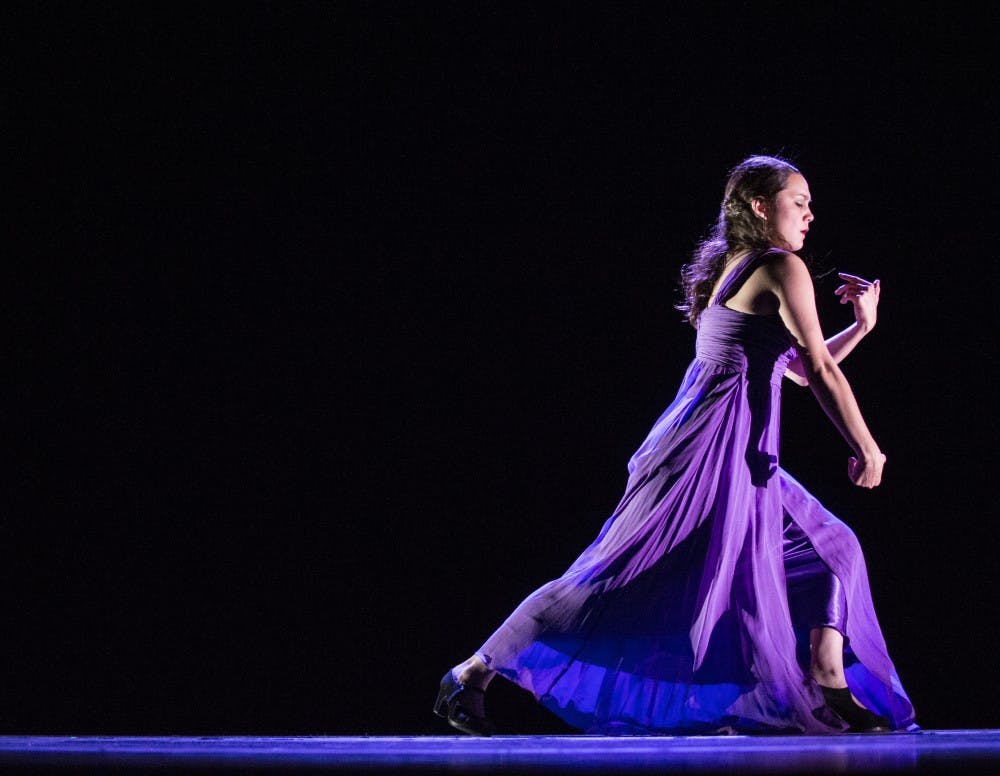On the weekend of Dec. 14, 2013, National Institute of Flamenco Director Eva Encinias-Sandoval watched over a studio recital of 320 students. A few days later, 40-foot flames engulfed the institute’s studios and conservatory, destroying 15 years of archived files, computers and about 1500 costumes.
Two months after the fire, Encinias-Sandoval said she and NIF have received help from the Albuquerque community. Dance lessons held at the main studios were relocated to weekend classes held at UNM. The institute’s educational partner, charter school Tierra Adentro, as well as the University, have opened their doors for office space.
“I think when we see something like this fire, and we realize how fragile it can all be… when we least expect it, something like this can happen and have a devastating effect,” she said. “At the same time, we hold the dance in us, we’re the dancers, not the building, not the costumes and not the computers that have all the information that help us run our business, but the artists themselves. We can continue to do our art even without our building.”
Local dance companies, artists, restaurants, contractors and lumber companies have offered their help and support since the fire, Encinias-Sandoval said.
“We had volunteers that were returning phone calls, returning emails, just making sure we were taking full advantage of the opportunities of generosity that we were finding from across our beautiful city,” she said.
Businesses continue to find ways to help, she said. Local members-only club ArtBar held an event last weekend to raise money for NIF’s fire recovery fund. She said she hopes to be able to reopen the institute, with a new study, within the next three to four years.
“Our dreams, our hope is to have a flamenco center that would compare to some of the finest locations that they have in Spain because the work we’re doing warrants that kind of central location,” she said, “To have a place that we can develop productions and just continue to thrive as a flamenco organization.”
Encinias-Sandoval said her mother passed down the art of flamenco to her, her brother and sister long before NIF became an institution in Albuquerque 30 years ago. Since then, she has dedicated her life to continuing the tradition, she said. Her children are both professional dancers and even her grandchildren are learning to dance.
NIF instructor Alexa Miton said the art of flamenco was passed on to her after a visit to a flamenco festival here in New Mexico in 2000. The institution organized the annual June festival, “Festival Flamenco.”
Miton, who was studying Spanish dance at the time, said she was drawn by the performances at the festival.
“I decided, because the festival was so extraordinary and I was a senior in high school, I decided to apply to UNM because I saw how wonderful the program was and I felt that I could find a wonderful niche here and explore this wonderful art form,” Miton said. “What’s wonderful here is that if you show even a little bit of passion and inspiration and enthusiasm, there’s so many avenues to take that can give you a wonderful experience.”
Miton said that in the 10 years she’s been an instructor, the flamenco program has helped reach out to the local community countless times and the out-pour of recent help shows that.
Get content from The Daily Lobo delivered to your inbox
“When there is something like the fire, the only thing you can do is keep moving forward and keep remembering that the whole reason any of us love what we do is because we love flamenco and it’s because it enriches our lives and becomes who we are,” she said.
“It’s a very precious thing and precious things need to stay alive. This might sound a little bit intense, but it’s like breathing air.”
Although plenty of documents and nearly 1,500 costumes were destroyed, Encinias-Sandoval said the art of flamenco has helped her rebuild the institution.
“Flamenco is an outcry, it’s an expression that was created by people who led very difficult lives, by the gypsies in southern Spain, people that were used to challenge and oppression and struggle in their lives,” she said. “I’ve had a very difficult experience in trying to develop and create this movement that we are now enjoying and experiencing, but I think that these types of struggles are just part of what we have to go through as artists, as human beings, and realize that the work is never done.”






